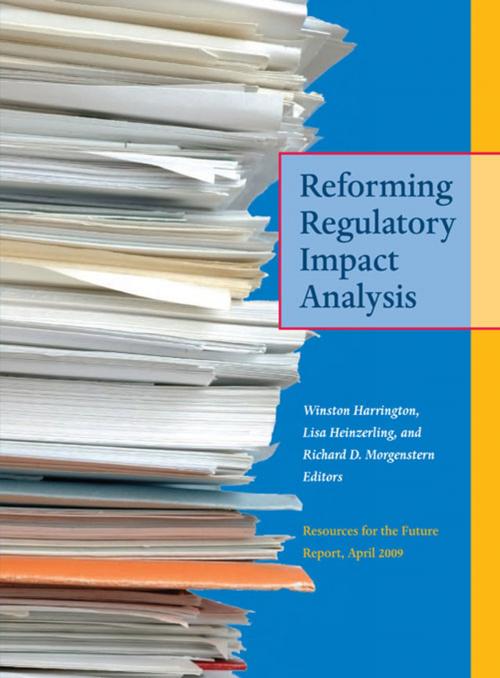Reforming Regulatory Impact Analysis
Nonfiction, Science & Nature, Nature, Environment, Ecology, Social & Cultural Studies, Political Science, Politics, History & Theory| Author: | ISBN: | 9781136526336 | |
| Publisher: | Taylor and Francis | Publication: | September 30, 2010 |
| Imprint: | Routledge | Language: | English |
| Author: | |
| ISBN: | 9781136526336 |
| Publisher: | Taylor and Francis |
| Publication: | September 30, 2010 |
| Imprint: | Routledge |
| Language: | English |
Over the past decades, considerable debate has emerged surrounding the use of cost-benefit analysis (CBA) to analyze and make recommendations for environmental and safety regulations. Critics argue that CBA forces values on unquantifiable factors, that it does not adequately measure benefits across generations, and that it is not adaptable in situations of uncertainty. Proponents, on the other hand, believe that a well-done CBA provides useful, albeit imperfect, information to policymakers precisely because of the standard metrics that are applied across the analysis. Largely absent from the debate have been practical questions about how the use of CBA could be improved. Relying on the assumption that CBA will remain an important component in the regulatory process, this new work from Resources for the Future brings together experts representing both sides of the debate to analyze the use of CBA in three key case studies: the Clean Air Interstate Rule, the Clean Air Mercury Rule, and the Cooling Water Intake Structure Rule (Phase II). Each of the case studies is accompanied by critiques from both an opponent and a proponent of CBA and includes consideration of complementary analyses that could have been employed. The work's editors - two CBA supporters and one critic - conclude the report by offering concrete recommendations for improving the use of CBA, focusing on five areas: technical quality of the analyses, relevance to the agency decision-making process, transparency of the analyses, treatment of new scientific findings, and balance in both the analyses and associated processes, including the treatment of distributional consequences.
Over the past decades, considerable debate has emerged surrounding the use of cost-benefit analysis (CBA) to analyze and make recommendations for environmental and safety regulations. Critics argue that CBA forces values on unquantifiable factors, that it does not adequately measure benefits across generations, and that it is not adaptable in situations of uncertainty. Proponents, on the other hand, believe that a well-done CBA provides useful, albeit imperfect, information to policymakers precisely because of the standard metrics that are applied across the analysis. Largely absent from the debate have been practical questions about how the use of CBA could be improved. Relying on the assumption that CBA will remain an important component in the regulatory process, this new work from Resources for the Future brings together experts representing both sides of the debate to analyze the use of CBA in three key case studies: the Clean Air Interstate Rule, the Clean Air Mercury Rule, and the Cooling Water Intake Structure Rule (Phase II). Each of the case studies is accompanied by critiques from both an opponent and a proponent of CBA and includes consideration of complementary analyses that could have been employed. The work's editors - two CBA supporters and one critic - conclude the report by offering concrete recommendations for improving the use of CBA, focusing on five areas: technical quality of the analyses, relevance to the agency decision-making process, transparency of the analyses, treatment of new scientific findings, and balance in both the analyses and associated processes, including the treatment of distributional consequences.















